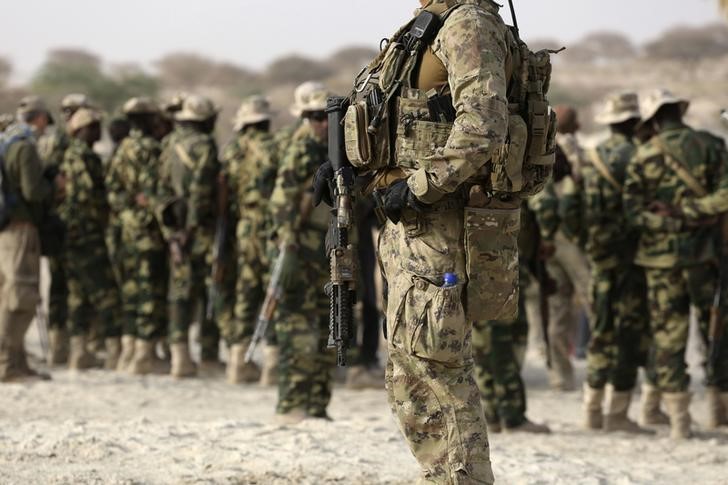Street Calls of the Week
By Tom Westbrook
SYDNEY, Jan 25 (Reuters) - The United States will send extra military aircraft to Australia's tropical north this year, a U.S. Marine Corps spokesman said on Wednesday, bolstering its military presence close to the disputed South China Sea.
The Marines' deployment in the strategic city of Darwin, agreed in 2011, was a critical part of former U.S. President Barack Obama's "pivot" to Asia amid China's increased assertiveness in the region.
The move also cemented close ties with staunch ally Australia and gave the U.S. a foothold in the area.
President Donald Trump's new administration has struck a hawkish tone over Chinese territorial claims in the South China Sea Asia, but it has abandoned the Trans-Pacific Partnership trade pact negotiated by Obama. Corps spokesman Major Chris Logan said there would be an increase in aircraft this year, including sending four MV-22 Osprey tilt-rotor planes, which boost the range of the marine force and five AH-1W Super Cobra helicopters.
Logan added that Marine numbers would remain at 1,250.
"The size and composition of each Marine rotation to Australia is mutually determined ... and is balanced against other resource commitments and respective national priorities," Logan said.
The number of soldiers sent to Australia's north has stalled well behind plans for a force of 2,500 by 2020, a goal that was delayed last year from 2017 as originally intended. and the U.S. agreed last October to share more than A$2 billion ($1.5 billion) in infrastructure investment and other costs linked to the 25-year deployment. have also discussed basing U.S. long-range B-1 bombers in Darwin, a move which drew concern from China's foreign ministry. defence department did not respond to a request for comment, but said in October that both nations intend to reach the 2,500-marine target "over the coming years".
Euan Graham, director of the International Security Program at Sydney-based think tank the Lowy Institute said the delay in ramping up troop numbers was unsuprising, given slow progress in negotiations on costs.
"The infrastructure that will accommodate the enhanced marine presence couldn't be done before the cost sharing was agreed, and that's not going to ramp up overnight, that will have to be a steady progression," he said.
Training exercises in 2016 included joint manouvres with soldiers from Japan and China and a program involving officers from Indonesia, Malaysia, Singapore and the Philippines, the department said then. ($1 = 1.3257 Australian dollars)
